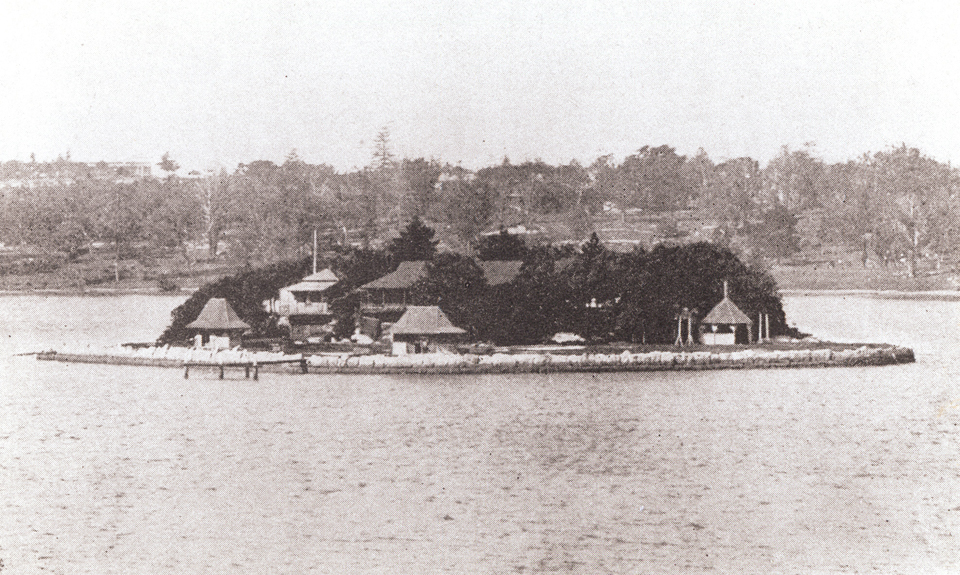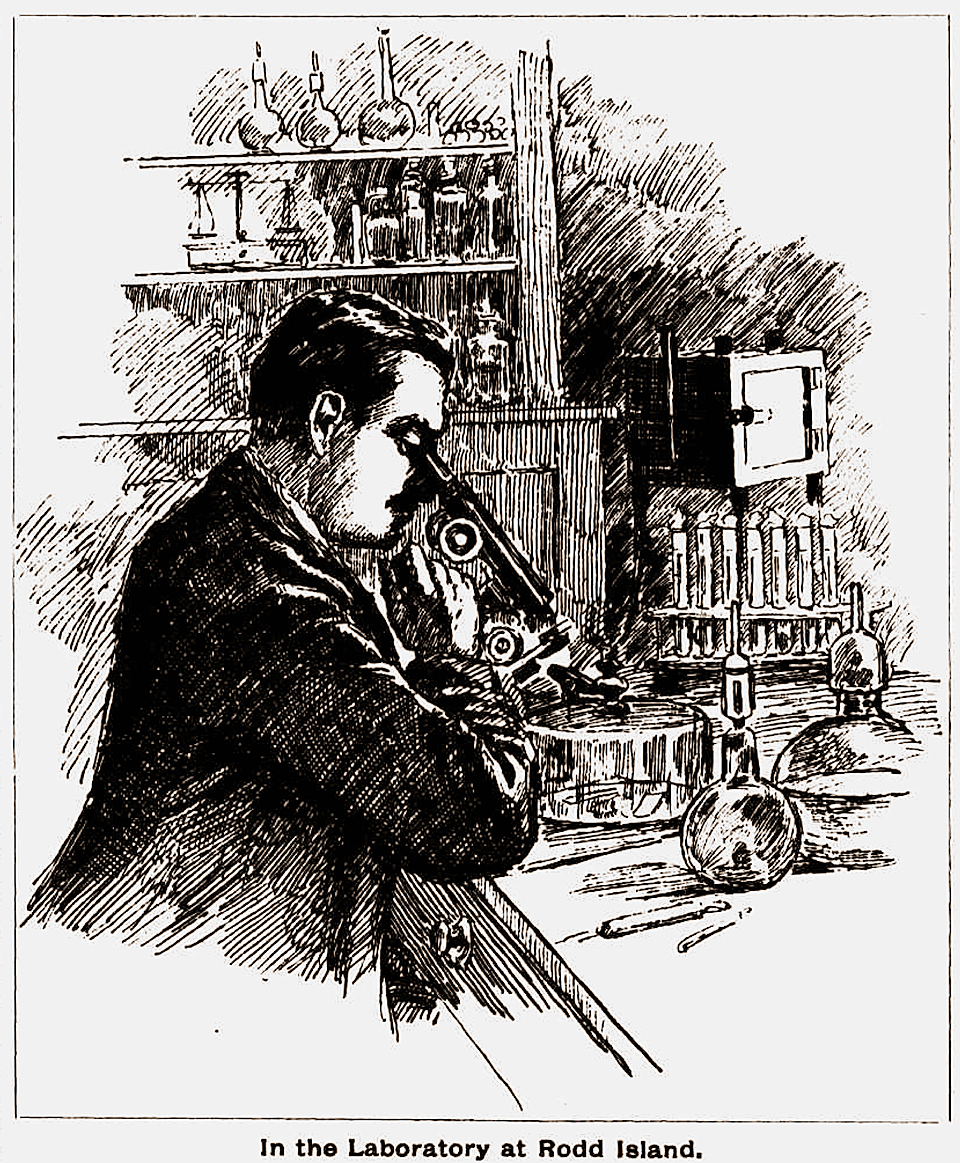
Our picturesque Sydney Harbour has 13 islands, each with its own fascinating history. Cockatoo Island, Garden Island and Fort Denison all come to mind as popular attractions, but perhaps not as well known is an island that was once converted into a laboratory in the late 19th century. As it’s National Science Week, it seemed like the right time to have a look at the history of Rodd Island. Listen to the podcast at 2SER.
Rodd Island sits in the middle of Iron Cove within sight of the former Rozelle Hospital and surrounding harbourside suburbs of Drummoyne and Russell Lea. For thousands of years the Wangal people of the Eora Nation used it to gather food and camp.
Over time it’s been known as Rabbit Island, Snake Island, Jack Island and Rhode Island. In 1842, the solicitor Brent Rodd claimed the island for his family’s recreational use, even building a family mausoleum there, but he never managed to obtain freehold of the island and it became a public recreation reserve in 1879.
In 1888, the island was converted into a laboratory when the NSW Premier, Henry Parkes, offered a £25,000 prize (some estimates say $10 million today), to anyone who could devise a biological solution to the rabbit plague that was ravaging the country.

The French microbiologist Louis Pasteur sent a team of people led by his nephew Adrien Loir to conduct experiments on the island using chicken cholera on rabbits. Although the disease did indeed kill the rabbits, they also found it killed native animals on the island. Despite their failure to resolve the rabbit problem, the team successfully developed an anthrax vaccine to protect Australian livestock. It led to more than four million animals being inoculated between 1890 and 1894.
For about six months in 1891, the island also acted as a kind of makeshift quarantine station. The celebrated French actress Sarah Bernhardt came to Australia as part of a world tour, accompanied by an extensive menage that included her pet dogs, two small terriers named Star and Chouette. Like the Pistol & Boo saga of May 2017, the dogs were not allowed into Australia by customs officials and questions were raised in parliament. A solution was offered by the scientist Loir, a fan of Bernhardt’s, who offered to house the dogs on the island.
According to a letter he wrote that was published in a French newspaper, the Parkes government gave him money towards costs to house the dogs, which included a new carpet, a flagstaff to hoist the tricolour when Bernhardt visited, twelve bottles of Moet and Chandon and an ivory comb for grooming the dogs. Bernhardt would visit the island on weekends when in Sydney, and she and Loir would apparently drink the champagne on the roof of the laboratory.
The laboratory was closed in 1894 and the island was returned to the public as a recreation area. It became a popular weekend picnic spot throughout the 20th century with as many as 1,000 people crowded onto the island on some weekends.
Rodd Island is now part of the National Parks and Wildlife Service, and you can find out more about visiting it at their website.
The Dictionary also has a self-guided tour of the Sydney Harbour Islands, including Rodd Island, on their free mobile app, Dictionary of Sydney Walks. The tour includes a GPS-enabled map with each stop clearly marked, a range of multimedia and text detailing each islands’ past, and advice about accessing the islands. Find out more on the Dictionary of Sydney website.
This post was written by Nicole Cama and Linda Brainwood and originally published at the Dictionary of Sydney.
Further reading
- Loren Allam, Louis Pasteur and the $10m rabbit reward, ABC Radio National: Earshot, 17 August 2015,
http://www.abc.net.au/radionational/programs/earshot/louis-pasteur-and-the-$10m-rabbit-reward/6703072 - ANGLO-COLONIAL GOSSIP Adelaide Observer, 3 October 1891, p7 http://nla.gov.au/nla.news-article160185945
